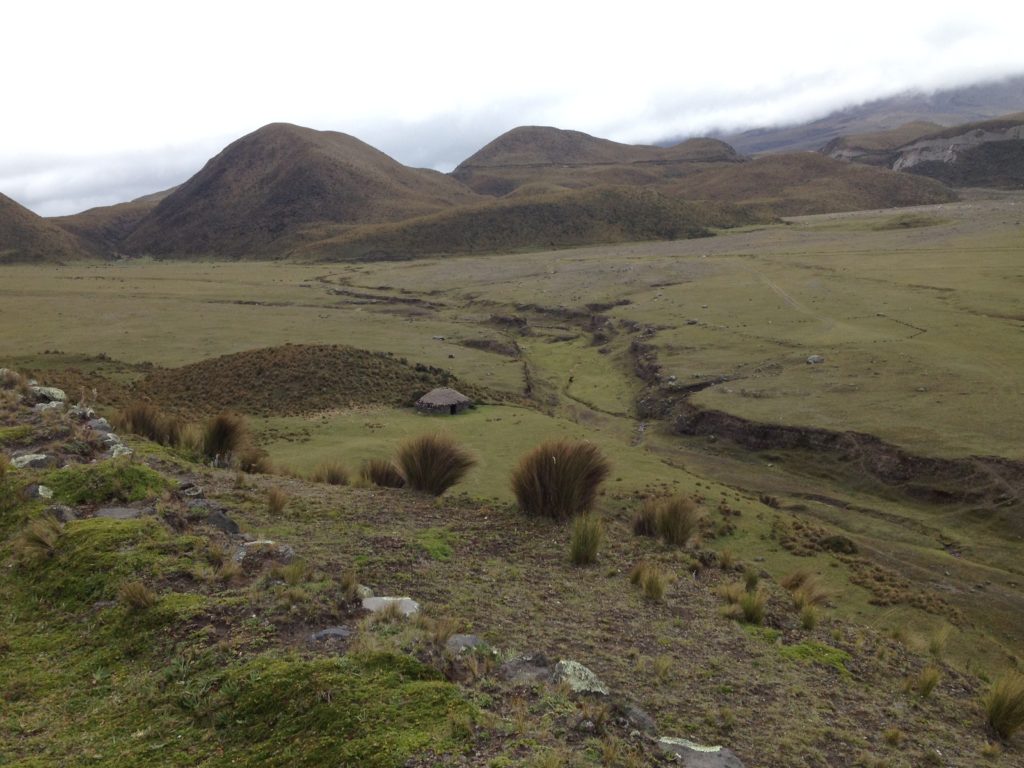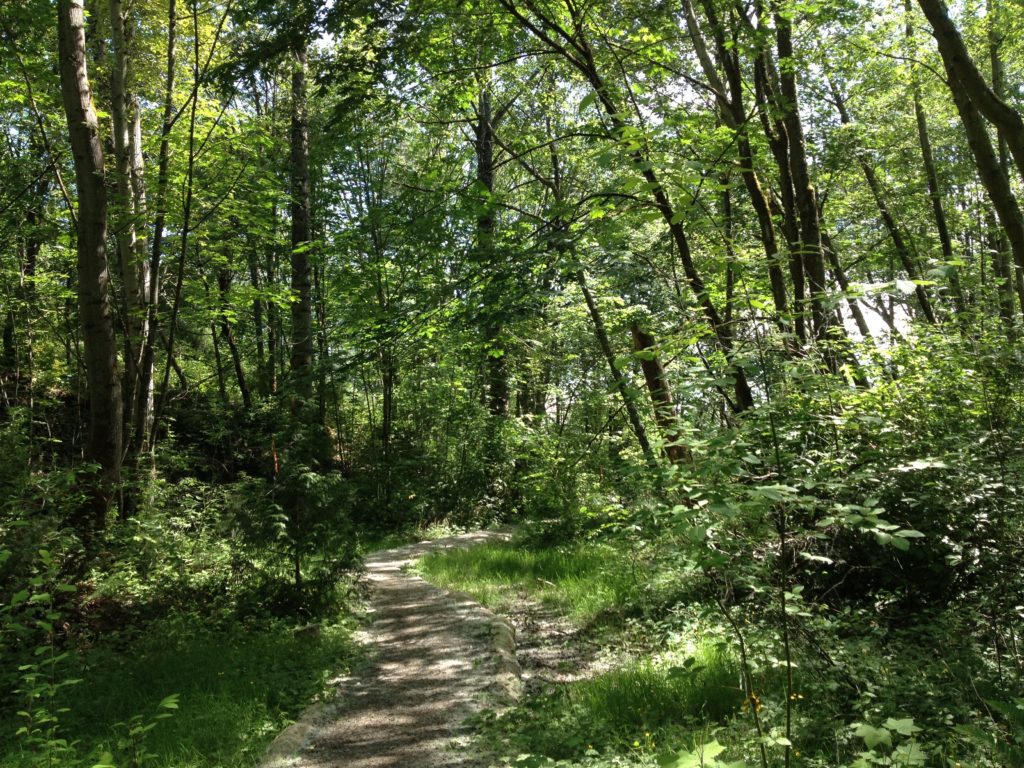Because I write about hiking in Washington State, and there is plenty of that to do, I rarely cross the border into Oregon or Idaho, even less to Canada. I have hiked briefly in Norway and Switzerland, “trekked” in Vietnam (really just a short walk), and visited southern Africa, but I don’t consider myself an experienced international hiker. All the more reason that, on a recent trip to Ecuador, a hike in the Amazon stretched my comfort zone.
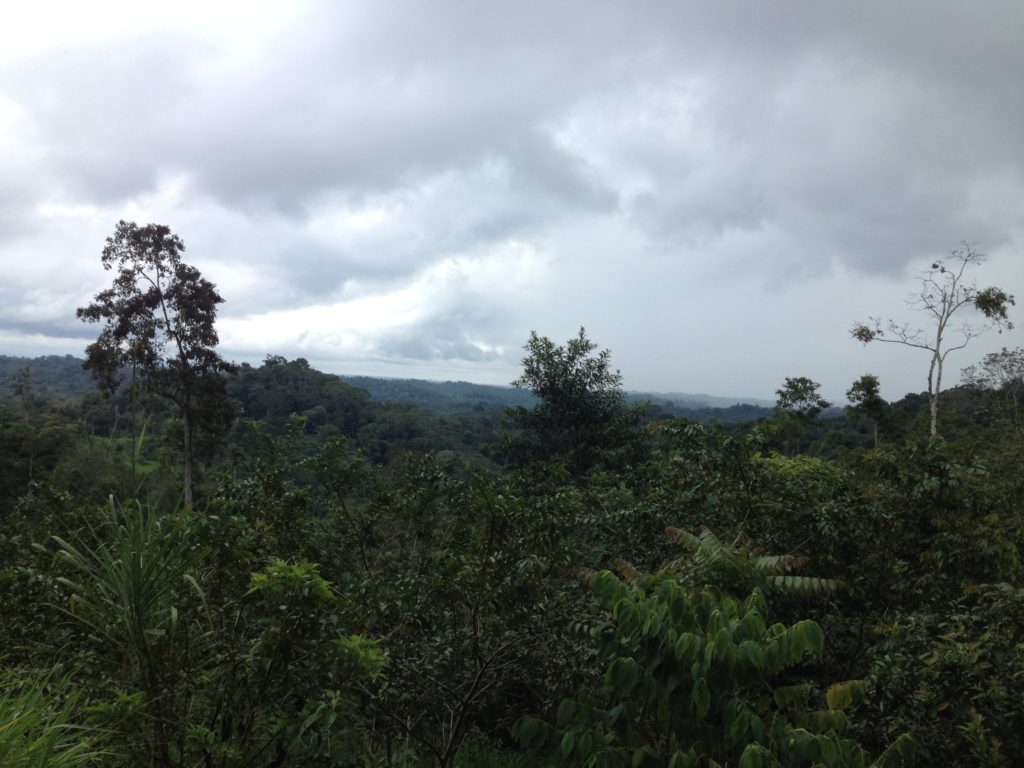
The Amazon is a broad topic—a watershed of almost three million square miles spanning eight countries. Its tributaries flow into the Amazon River from the Andes on the western edge of South America to the Atlantic Ocean on the east. I hiked one mile in the Oriente section, near the Rio Napo, a broad, brown, slow-moving tributary that begins on the Cotapoxi volcano and flows 550 miles to the Amazon.
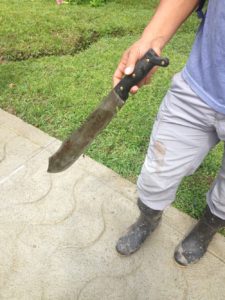
This sampling of the jungle began with a machete. Wielded in the strong arm of our young guide Alfonso Jimenez, the machete was not to stave off snakes or jaguars or other hostile hikers but to keep vines and encroaching palm leaves at bay—the usual trail-clearing and upkeep. More important were the rubber knee-high boots we all tucked into to protect from mud and insects.
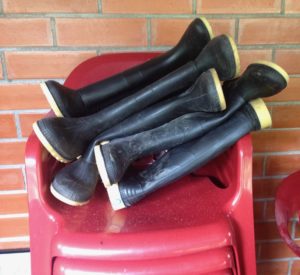
Our open safari excursion truck stopped along the side of a rocky dirt road with no trailhead in sight. We were seven eco-tourists, young and old, in a rainforest preserve supported by the Fundacion Yachana. The foundation also supports the Yachana Parque de Ciencias, an education center envisioned and implemented by Douglas McMeekin. Yachana, an indigenous Kichwa word, means “a place for learning.”
Alfonso, a graduate of that program, led us across a shallow ditch with trampled vines and ferns and paused for a brief safety orientation. We were not to grab hold of tree trunks inhabited by large ants, nor should we linger crossing fire-ant hills. He pointed out one exotic bug which spitefully bit him but not us. Other than that, the dangers would be limited to those vines, both hanging and underfoot.
As soon as we were beyond the sunshine of the road, the trail underfoot was easier to follow, sheltered from exuberant growth by the canopy. As Alfonso swung left and swiped right, I maintained a respectful distance. He pointed out the strangler figs which root from animal droppings in trees. They start at the top of a tree, seeking light, then grown down. They are somewhat similar in their action to the invasive ivy of the Pacific Northwest, but unlike ivy, these vines survive to become a tree. Once the roots reach the ground, they strangle the host tree and may or may not kill it. The walking pine tree has a similar standing cone of roots.
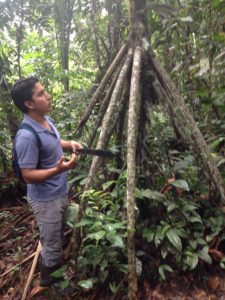
We couldn’t help but notice the giant ceiba pentandra, better known as a Kapok tree. Kapok is the cotton-like fluff obtained from its seed pods which used to be fill for life jackets, mattresses, and pillows until artificial alternatives were produced in the 1940s. The tree matches in exotic appeal the baobab trees of Africa and the giant cedars of the Olympic rainforest. I marked the kapok’s huge buttress roots as a potential refuge, a good tree to stay put with.
The fear of getting lost in the rainforest, similar to the dark forests of the Northwest, is real. There are few breaks in the canopy—only when a tree falls down and creates an opening—and the dense vegetation underneath quickly obscures little-used trails. The casual hiker is dependent on someone else’s trail maintenance. But this hike was without hazard except for one final vine reaching out to ensnare a dragging foot. The climatic drama came after the hike–racing a torrential rain-storm back to shelter.
A later night walk with flashlights revealed more exotica—tree frogs, pond frogs croaking loudly the whole night long, spiders including the tarantula, salamanders, cucarachas, and the more familiar bugs like katydids and grasshoppers.
Hiking for pleasure is a foreign concept to the resident of the Amazon and hiking for fitness would be self-defeating. The object in life closer to nature is to conserve energy and spend it wisely. For centuries, transportation has been by river; you can see where you are going and where you might come out. Walking comes with a purpose: to harvest grapefruit or heart of palm on a farm, to carry a bag of lemons or a baby with you to the bus-stop and the market. Schoolchildren at recess gazed curiously at these gringos trudging down the road in the sun after our truck runs out of gas. Our companions on hikes and biking adventures were mostly European—from Norway, England, Lithuania, Germany, and France.
On the same trip, we also hiked to a waterfall near Mindo, west of Quito, a trailhead reached by a cable car ride over a deep valley. To reach the cable car station, we could either ride on a ski lift type chair or climb up a relatively short but steep mountain. Leery of heights I can’t attain on my own two feet, I chose the hike, which added meaning to the phrase “catching your breath.” The waterfalls are like waterfalls everywhere, but the birds, insects, and wildflowers out-color even a Cascades meadow in full wildflower. The reds are redder, the pinks are rosier; one bird can display a rainbow.
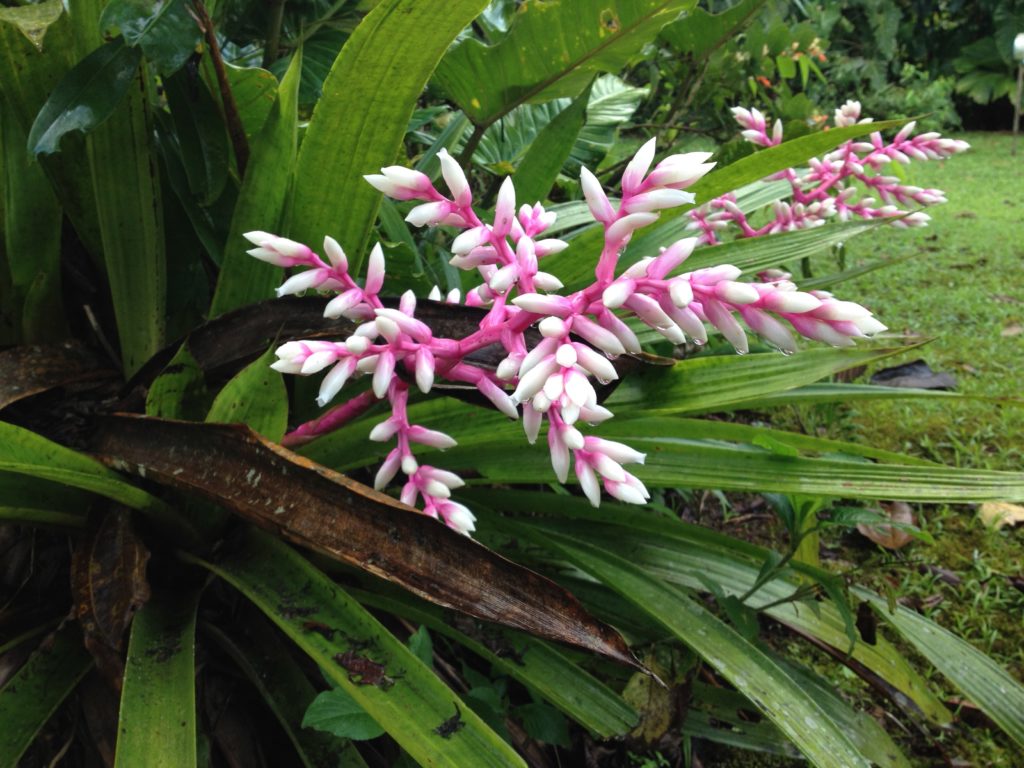
From Mindo, we traveled east to the highlands and biked down Cotopaxi, one of the world’s highest volcanoes at more than 19,000 feet. We started at more than 14,000 feet, high enough. (The top of Mt. Rainier is 14,411 feet. Sunrise, where trails on the slope are accessible by auto, is at 6,400 feet, about the highest I’ve ever gone). At a similar elevation, more than 12,000 feet, we hiked around a caldera–an Ecuadorean counterpart to Oregon’s Crater Lake–at Quilotoa. In the highlands, we were hiking for views and solitude, which also seems a foreign concept in Ecuador. Life is nothing if not communal, and the highlands can be cold, windy, barren, and hostile. One arrives, has an adventure, and leaves. The thin air challenges even the most fit.
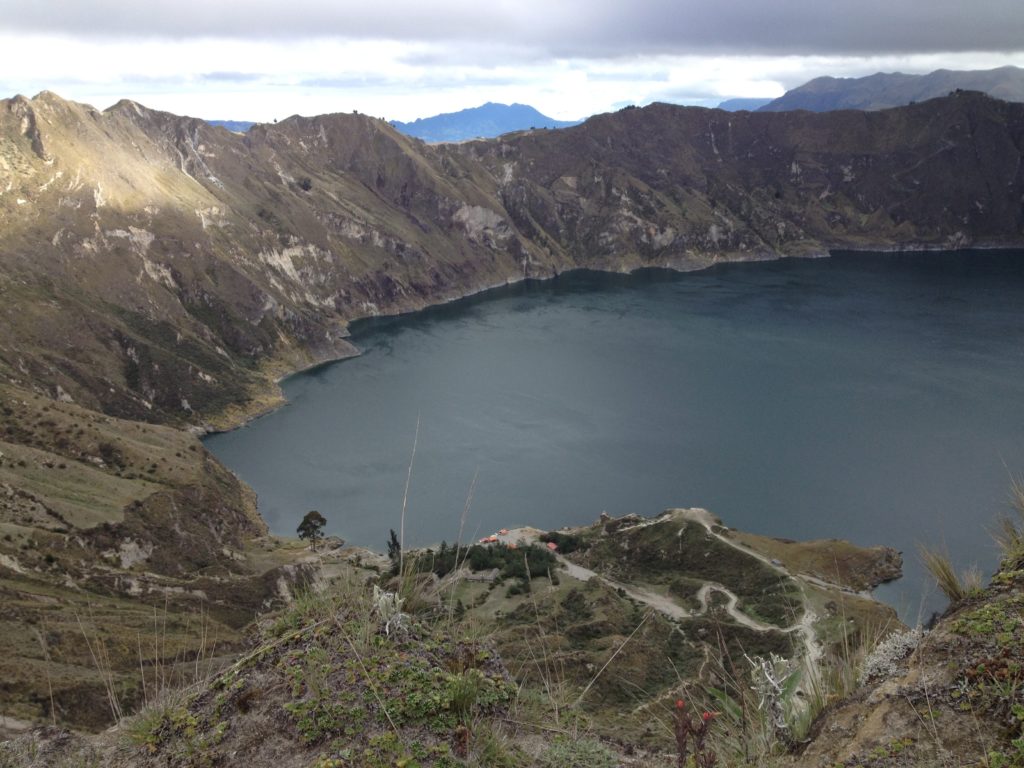
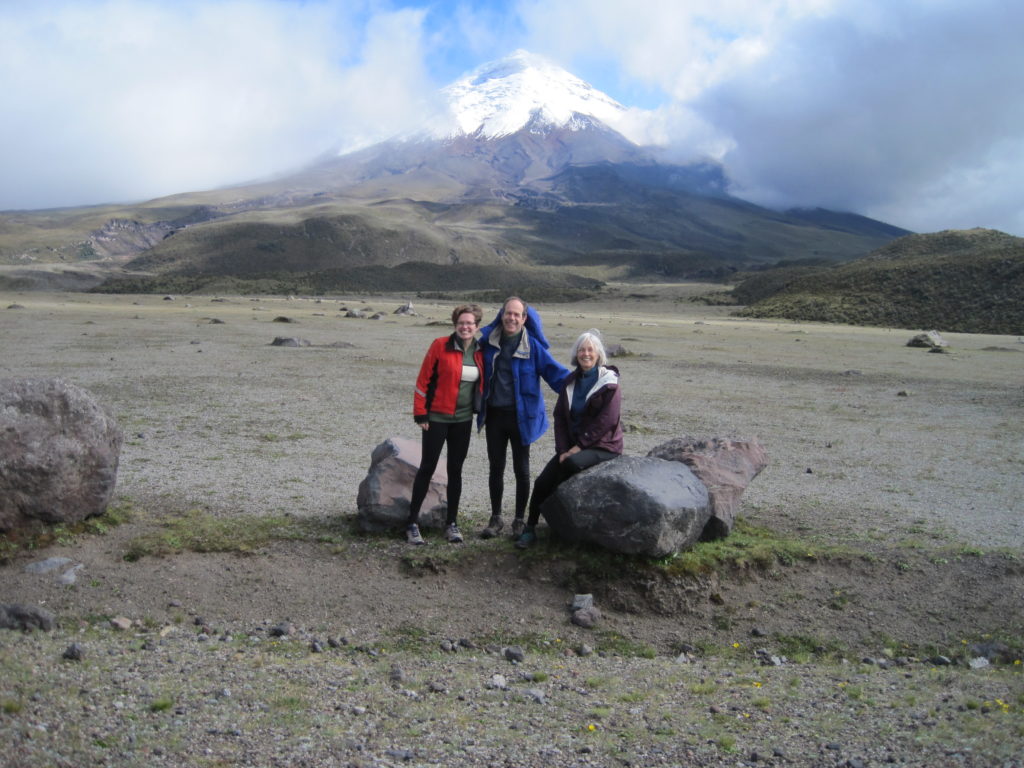
The human universal between hiking in the Pacific Northwest and in Ecuador? A connection through the land to the ancient past. On the slopes of Cotopaxi, on a hillock elevated from surrounding plains, we found Inca ruins. Restored rock walls and a thatch hut recall the 40-year period of Inca domination in Ecuador in the late 1400s before the Spanish invaded in 1532. This was a place from which you could see for miles–see your enemies, see game–and shelter down the hill. Despite the threatening volcano, humans have made an imprint on the land for thousands of years.
